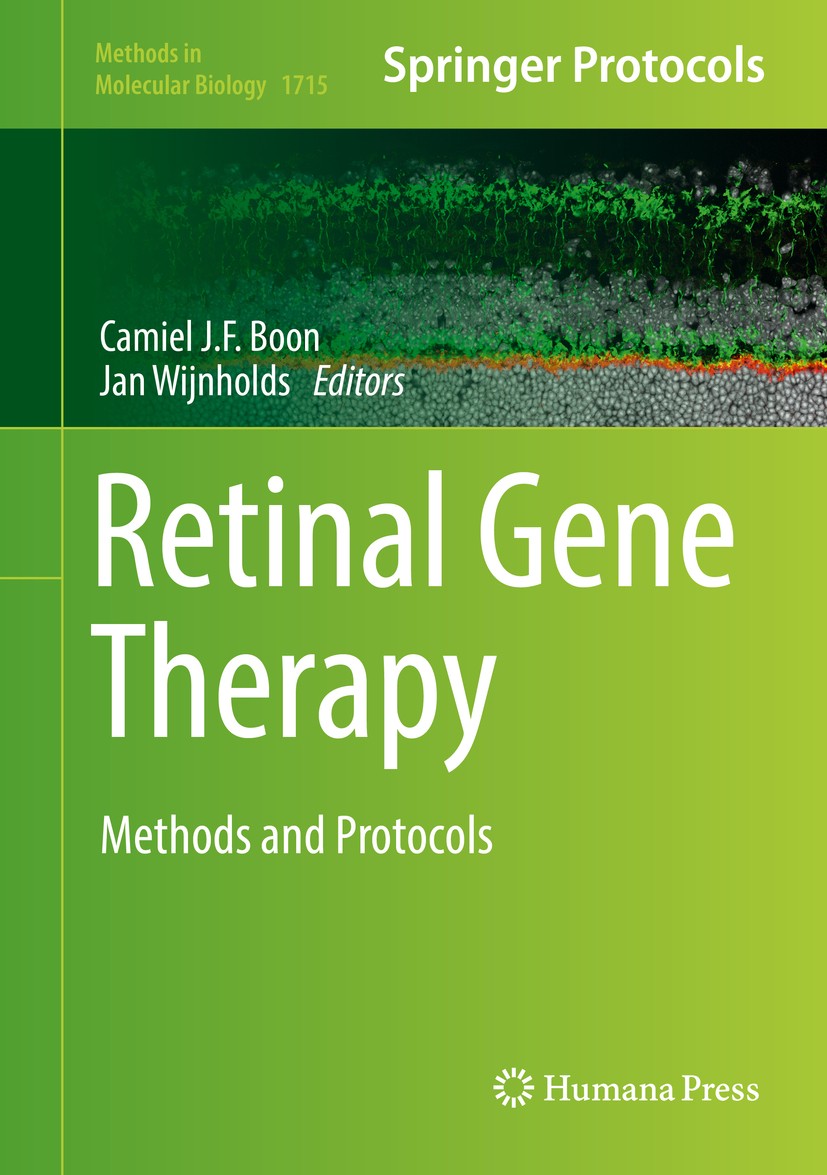| 书目名称 | Retinal Gene Therapy | | 副标题 | Methods and Protocol | | 编辑 | Camiel J.F. Boon,Jan Wijnholds | | 视频video | http://file.papertrans.cn/830/829225/829225.mp4 | | 概述 | Includes cutting-edge techniques for the study of retinal gene therapy.Provides step-by-step detail essential for reproducible results.Contains key implementation advice from the experts.Includes supp | | 丛书名称 | Methods in Molecular Biology | | 图书封面 |  | | 描述 | This detailed volume describes a spectrum of methods and protocols that can be used for the bench-to-bedside development and evaluation of retinal gene therapy. Methods for the successful delivery of these gene therapy vector systems to the retina are examined, as well as assays to test the efficacy in vitro in cell cultures, for gene augmentation and gene editing in vivo on rodents, pigs, and monkey retinas, and on human retinal explants as well as in human clinical studies. Written for the highly successful .Methods in Molecular Biology. series, chapters include introductions to their respective topics, lists of the necessary materials and reagents, step-by-step, readily reproducible protocols, and tips on troubleshooting and avoiding known pitfalls. .Authoritative and practical, .Retinal Gene Therapy: Methods and Protocols. provides a wide range of readers from students to research experts with vital information on ocular gene therapy vector technology, .in vitro. and .in vivo. biological assays, and clinical protocols, to promote further studies for the benefit of children and adults with inherited retinal disease.. | | 出版日期 | Book 2018 | | 关键词 | Gene therapy vector; Retinal cell types; Gene augmentation; Cell cultures; Gene silencing; Vector product | | 版次 | 1 | | doi | https://doi.org/10.1007/978-1-4939-7522-8 | | isbn_softcover | 978-1-4939-8509-8 | | isbn_ebook | 978-1-4939-7522-8Series ISSN 1064-3745 Series E-ISSN 1940-6029 | | issn_series | 1064-3745 | | copyright | Springer Science+Business Media LLC 2018 |
The information of publication is updating

|
|
 |Archiver|手机版|小黑屋|
派博传思国际
( 京公网安备110108008328)
GMT+8, 2025-12-14 16:11
|Archiver|手机版|小黑屋|
派博传思国际
( 京公网安备110108008328)
GMT+8, 2025-12-14 16:11


